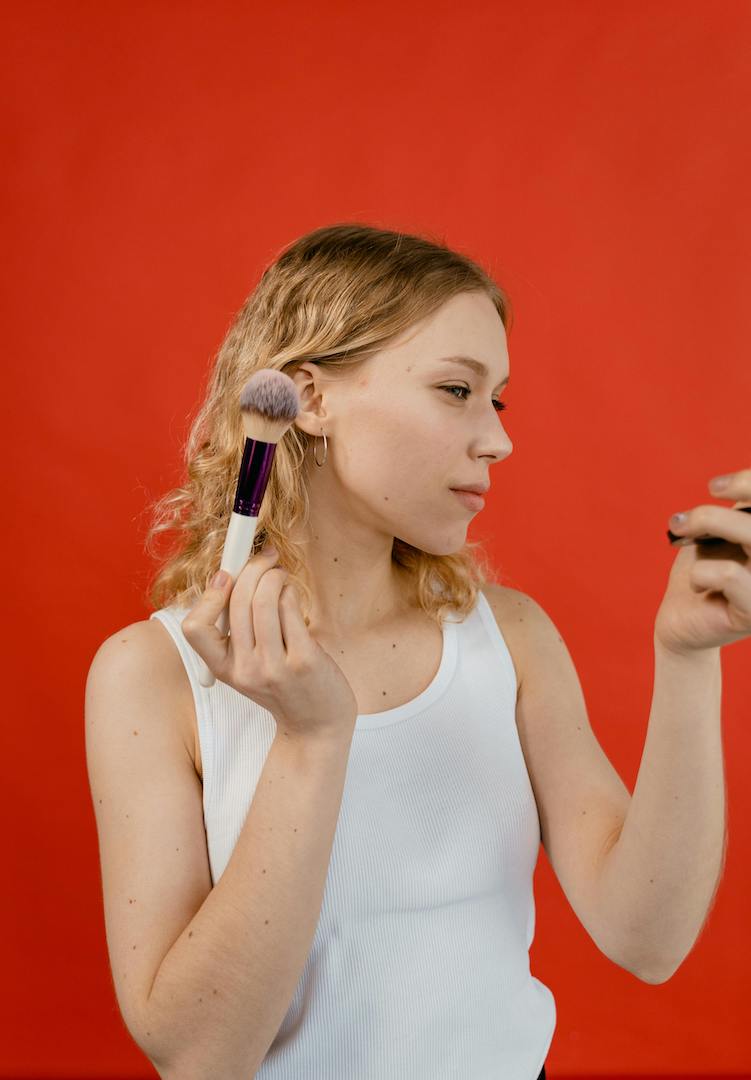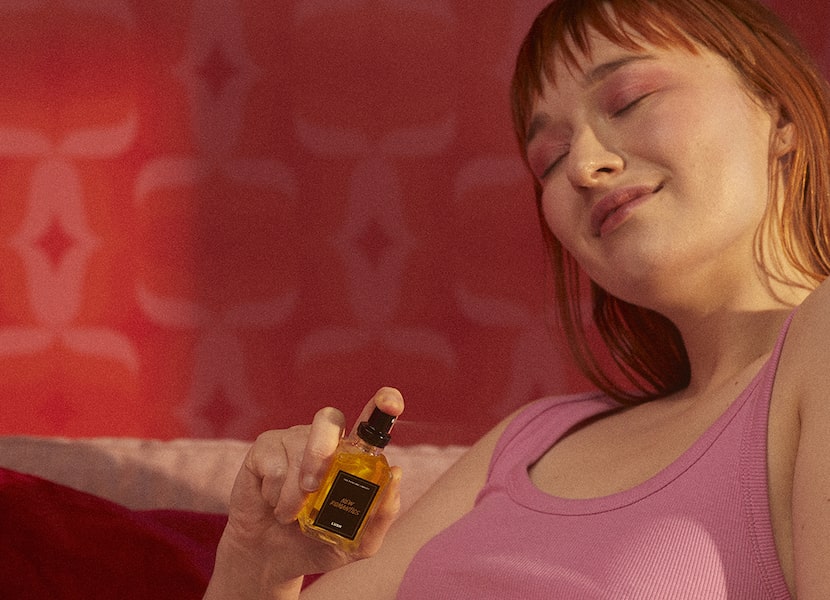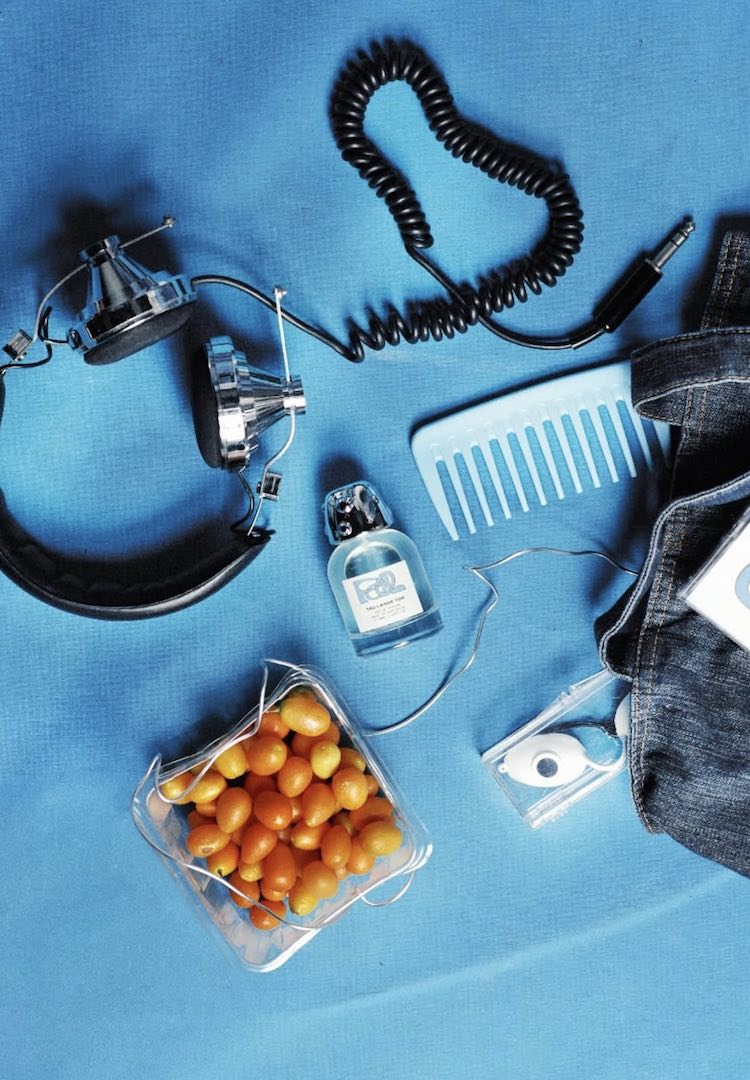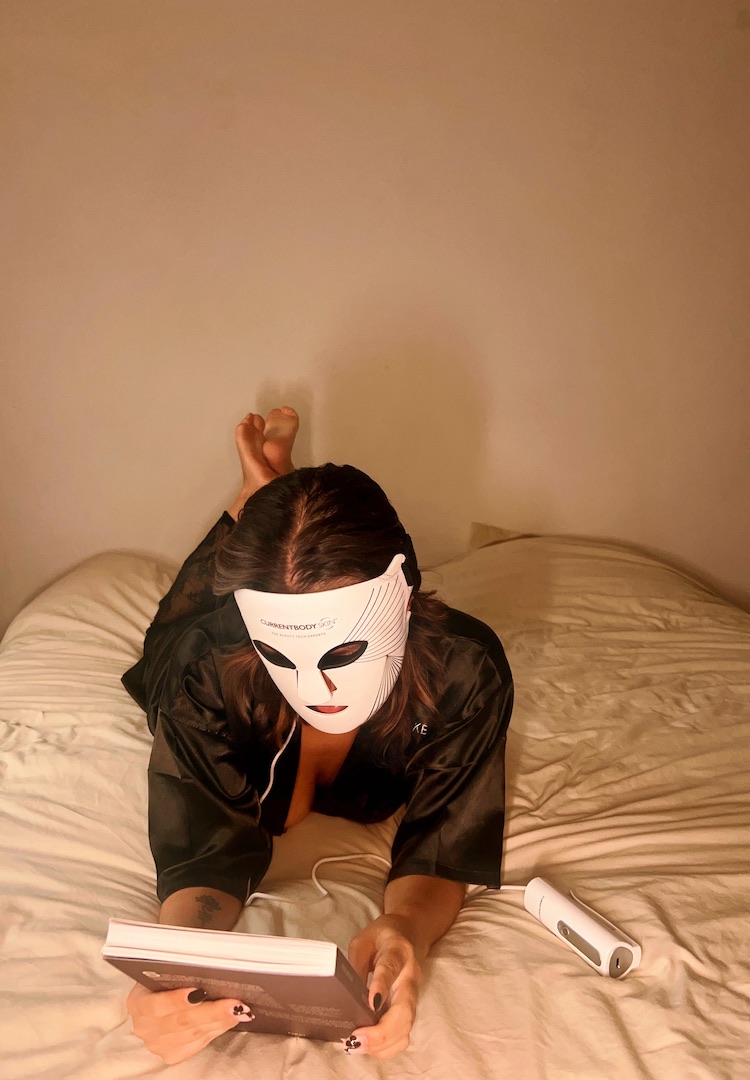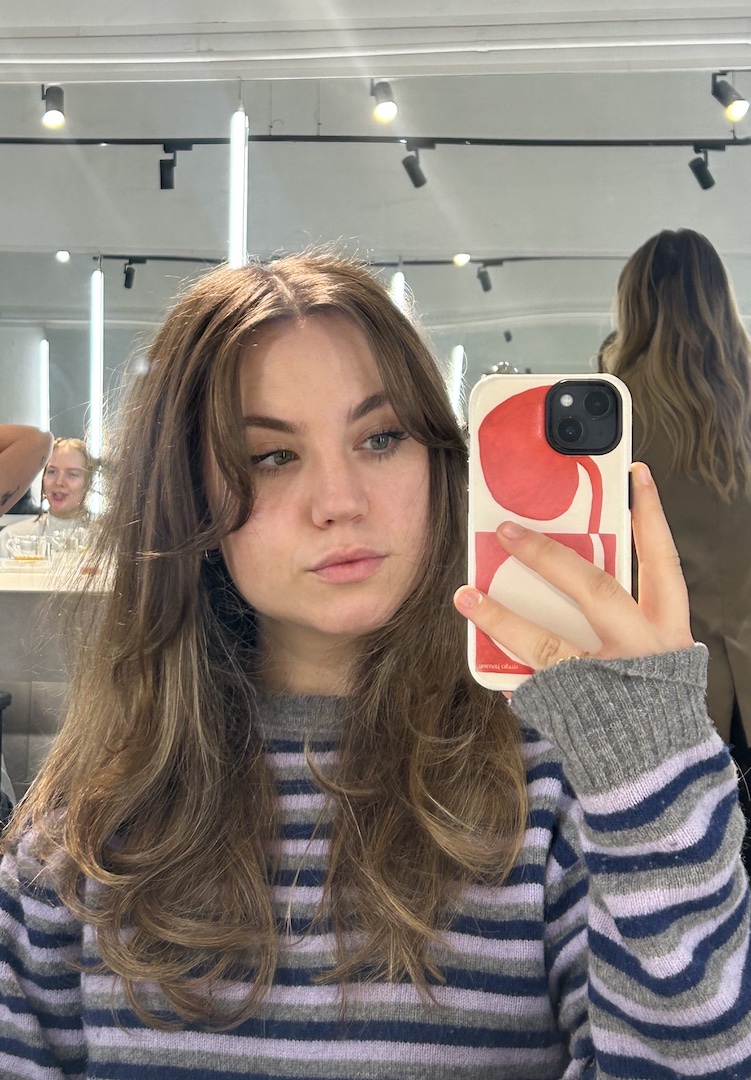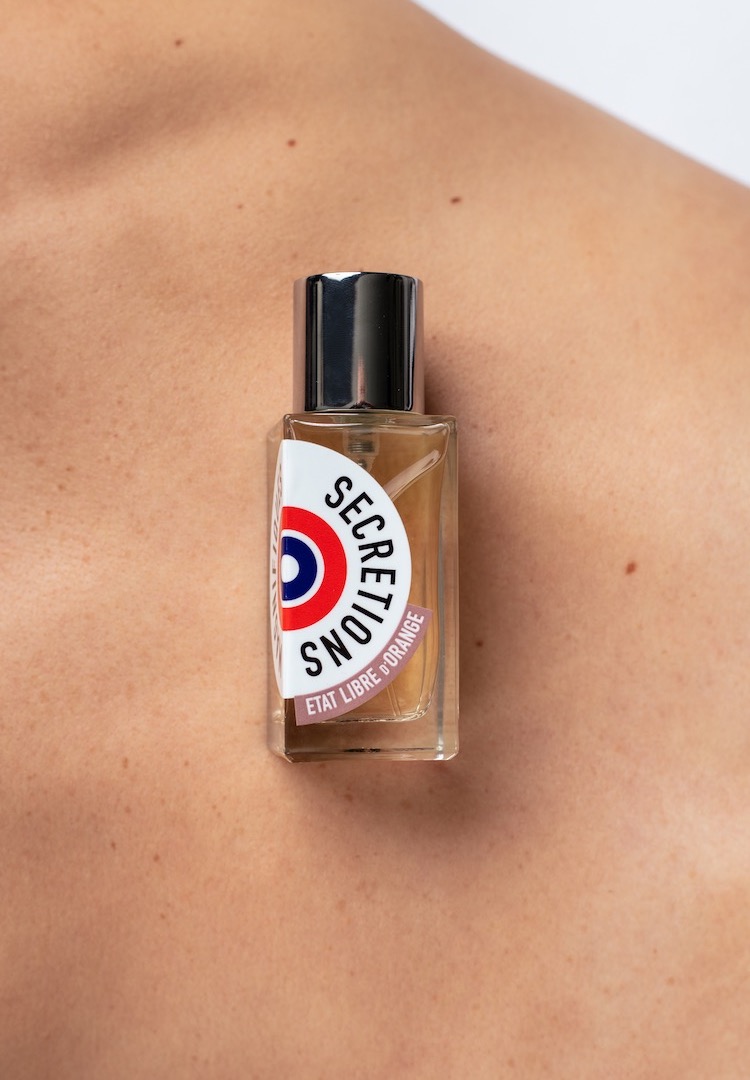What is ‘scent layering’ and why is it important?
In partnership with Lush
Words by Lauren Payne
“Sometimes you can become nose-blind to what you’re smelling.”
Most of us have, at some point, been on the hunt for a ‘signature scent’. A fragrance carefully chosen and worn so regularly that if anyone were to smell it out of context, they’d immediately be reminded of us. The scent becomes inextricably tied to us, as loved ones associate the smell of our favourite perfume with memories of us.
It’s a beautiful concept in theory, but there’s one problem many of us overlook: we’re often all drawn to the same scents. It’s why so many fragrances houses have bestsellers and why some perfumes reach icon status. Sure, they’re beautiful fragrances, but I’d hardly pinpoint one as a ‘signature’ to any one person I know.
We like nosy people. Don’t be shy, head to our Beauty section for more.
A signature scent should be specific to you, which, unless you know what fragrance everyone is wearing, can be hard to be sure of. So it might be time to look at ‘scent layering’.
Scent layering isn’t as simple as spraying two or three of your favourite perfumes and hoping for the best. It’s a delicate art that involves identifying different notes across scented body, skin and hair care products, then layering them to produce a fragrance that’s original and unique to you. Senior Perfumer at Lush, Emma Vincent, likens it to cooking. “You need to give yourself time,” she says.
Emma’s played a hand in some of Lush’s most delicious scents, as the handmade cosmetics brand creates all its fragrances in-house. These feature across the brand’s hair and body care products, as well as Lush’s unisex fragrance line. Her work involves experimenting with essential oils, instead of compound chemicals, to create scents that are longer-wearing and unique to the wearer as they interact with each person’s skin differently. Below, she shares her insights and advice on scent layering.
What is scent layering?
There are so many different ways you can scent your body. Think about the products that stay on your skin and in your hair, like conditioners, body lotions, solid perfumes, perfumes and soaps. Understand the application of the product and then consider the location of the application.
For example, solid perfumes don’t project in the same way regular perfumes do, so when you use one it’s more for yourself than others. You might want to use a comforting or relaxing scent profile on your wrist during the day, which you can then easily add to with a more vivacious perfume for the evening.
Hair and body care are also a great way of retaining a scent for yourself. We have a scent called Rose Jam which we use in a shower gel, and in a conditioner. We also have Ro’s Argan Body Conditioner, which is great because you can use it in the shower by applying a layer on your skin and it forms a bit of a barrier, so it doesn’t wash away. Later, you could add on a perfume and create an all-encompassing fragrance using these different product types, or you could clash things by trying different scented products together to see how it goes.
In any case, it’s great to think about what you want from your fragrance, even as you step into the shower, so that you can work with products that are going to create the desired effect. Ultimately, all the products you use, even down to your soap, can impact the final result and help create that real head-turning fragrance effect that so many people are searching for.
It’s a similar process to cooking because when you’re trying to create a dish, you’re tasting things and [noticing if] it’s missing something. It’s the same process with perfumery: you smell the thing you’re creating along the way, and you try and work out what’s missing.
What are the benefits of scent layering?
The great thing about scent layering is that you get the opportunity, especially if you’re layering perfumes, to create something that’s unique to you. If you layer two perfumes together, you’ll create a scent that doesn’t exist anywhere else in the world, and everybody wants to have something that’s bespoke.
There aren’t any hard and fast rules. It’s like personal expression, people like different things. Not everyone will like a gourmand fragrance or a citrus fragrance, they might like something that’s more green. Scent layering also increases the longevity of a scent, because sometimes you can become nose-blind to what you’re smelling.
How do we know which scents will work well together and which scents won’t?
It comes down to personal preference. Everything we do at Lush in terms of scent is experimentation. I personally wouldn’t layer a gourmand scent, like a vanilla, with a green scent because sometimes a green can be quite harsh, but others might love that!
In terms of a solid layering process, you’d want something that smells a bit richer to act as the base note or the base layer on your skin. Then you could apply something citrusy or floral on the top.
What’s the difference between a base note and a top note of a fragrance?
A base note tends to be a heavier, less volatile material. If you smell a fragrance or a fragrance within a product, the smell that lingers on your skin is the base note. They would typically be synthetic musks, or things like tonka, vanilla, powders and resins.
As for top notes, they’re less volatile, lighter and they’re the thing you’re going to smell initially, like your first impression of the fragrance. They don’t tend to hang around for very long; then they will disappear revealing the middle notes and then you’ll be left with your base notes.
How can we layer scents well?
You need to give yourself time. Don’t get up in the morning, spray yourself with a couple of perfumes and spend the day with a scent you don’t like. Take the time to see what you’ve got and have a play around.
People don’t value their sense of smell as much as they value their other senses. You wake up in the morning and you apply your deodorant, you apply your moisturiser, and you’re not really thinking about what you’re putting on.
People also have a perception of what they like. If someone asks what kind of scent they like, they might say florals, but what they have on their shelf at home may be the opposite of florals. People have a preconceived idea about what they like, but then what they actually buy can be very different because in reality, scents are actually very complex.
A great way to figure out which scents really complement your skin is to do a fragrance consult. At Lush we love to sit down with our customers to understand what they’re really looking for in a fragrance. That might not just be a particular scent, but a feeling or a memory as well.
What advice would you give to someone wanting to begin scent layering?
Look around your cupboards and your bathroom, and think about what you have and how you can use those products in a slightly different way. Maybe there’s a way you can layer your products that’s not the traditional way they’re used.
For example, the ends of my hair are quite dry so I like to rub a solid perfume between my fingers and gently run it through my ends. It’s a nice way to make my hair look a bit healthier while also adding a light touch of fragrance.
I also like to spray scents on my clothes. Sometimes scents like to change and then disappear from your skin, based on pH levels and chemistry. But I find that if I spray a scent onto my clothes, I have it with me and if I want to take it off, I can.
You can have one scent on a short or a top, then you might add another scent to a cardigan or a coat, and you can wear them together. Then if you want to go back to your original scent, you can take it off and wear something else – it’s like scent styling.
If you’re ready to start experimenting with scent layering, explore Lush’s range here.



